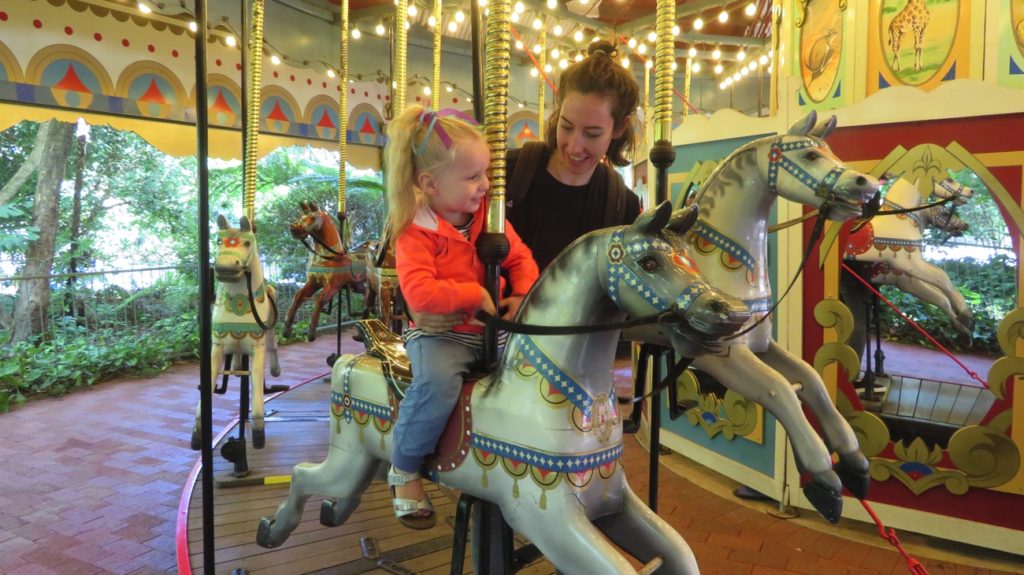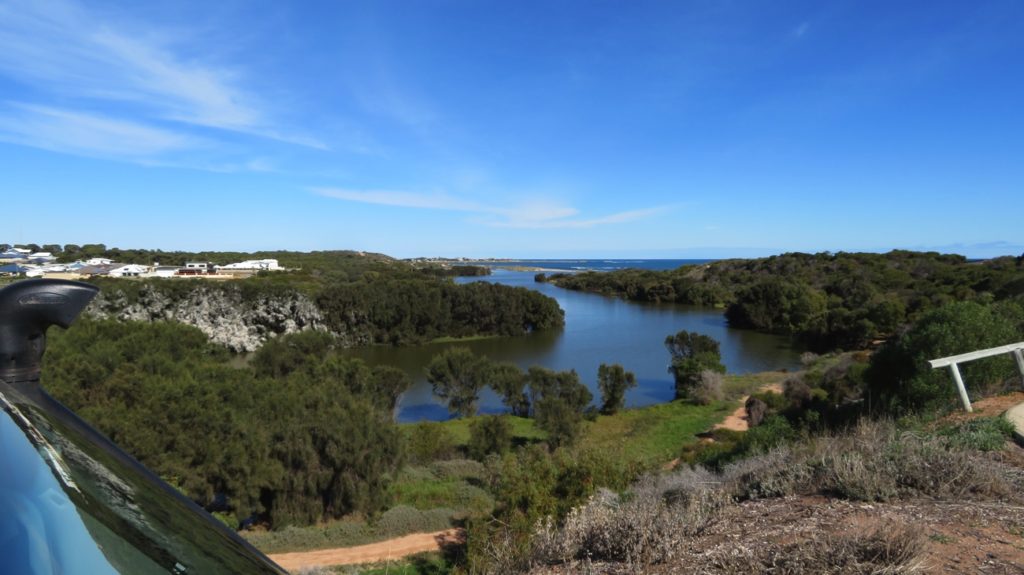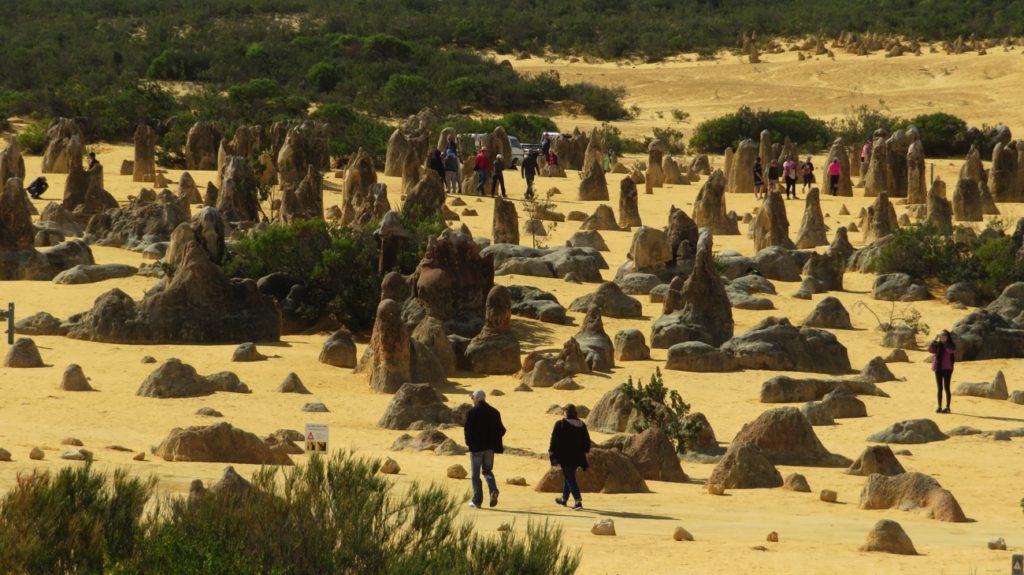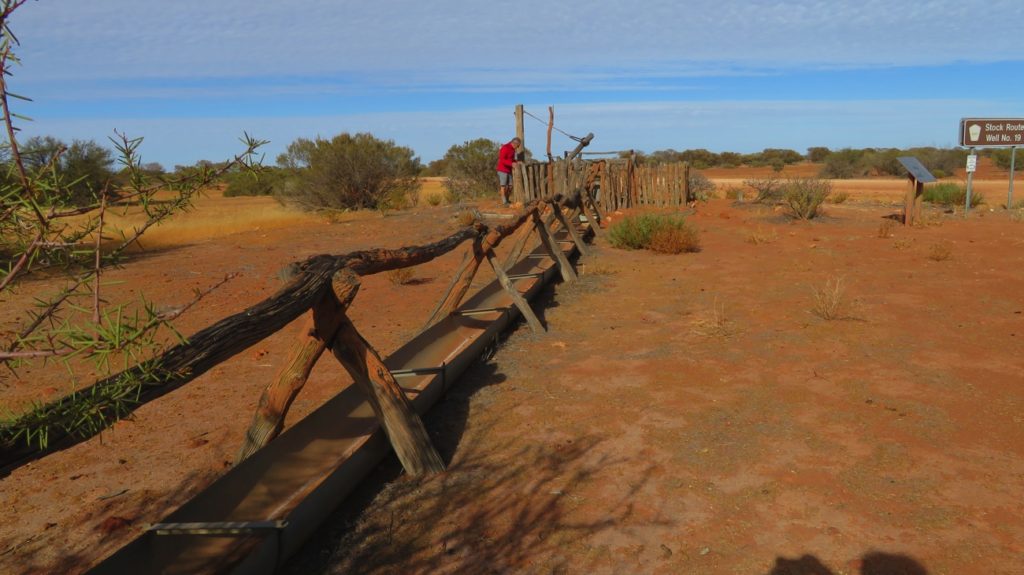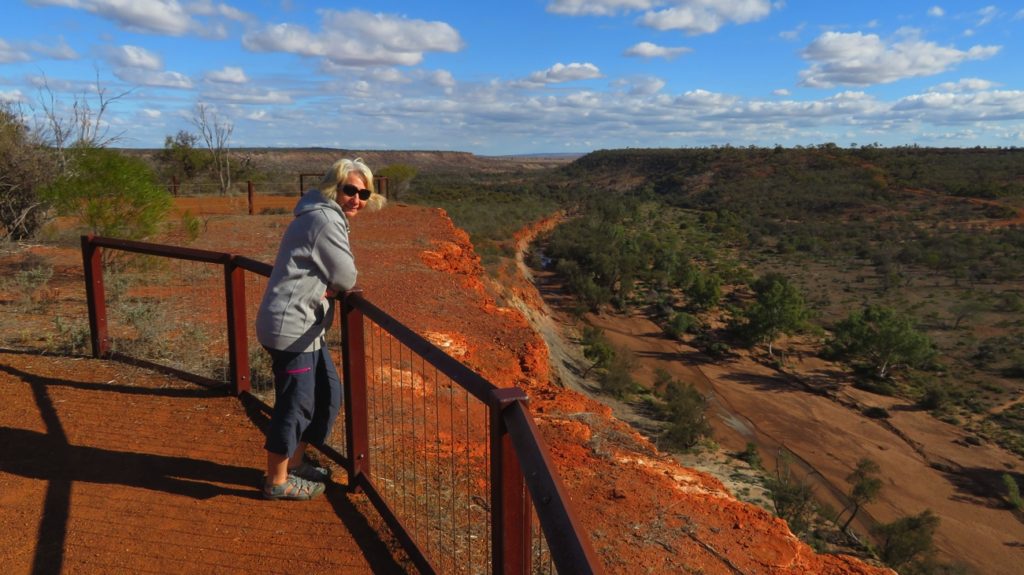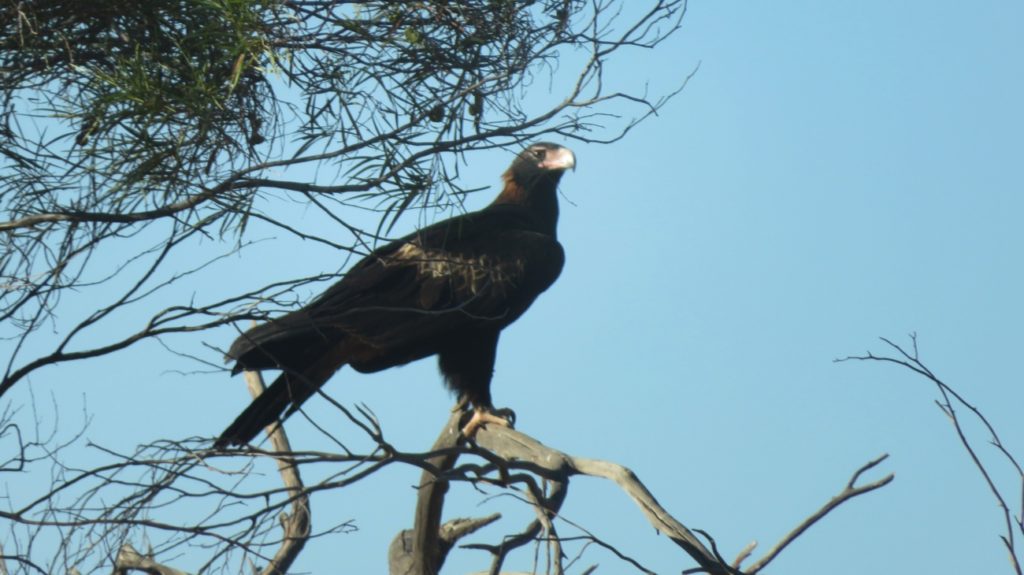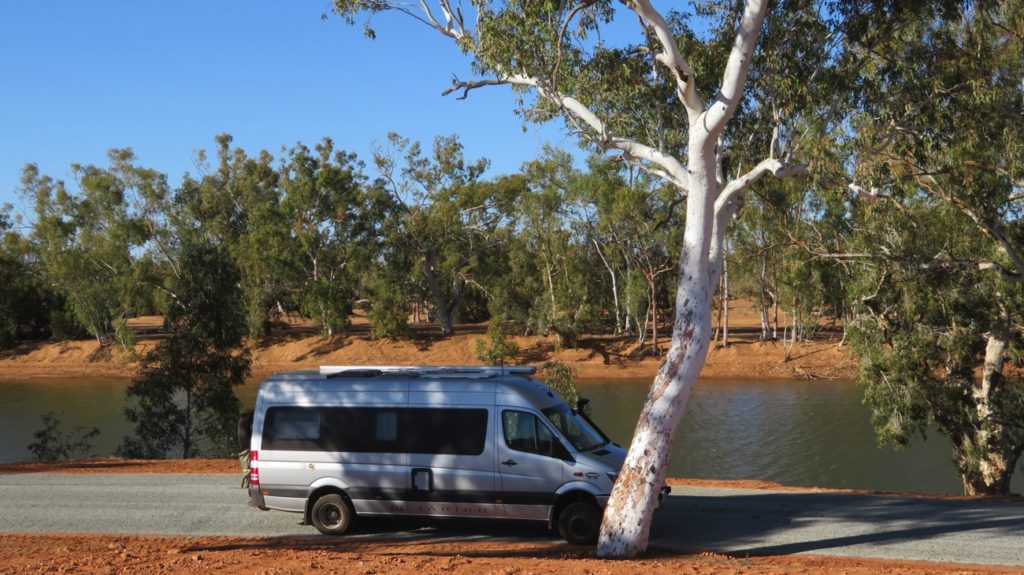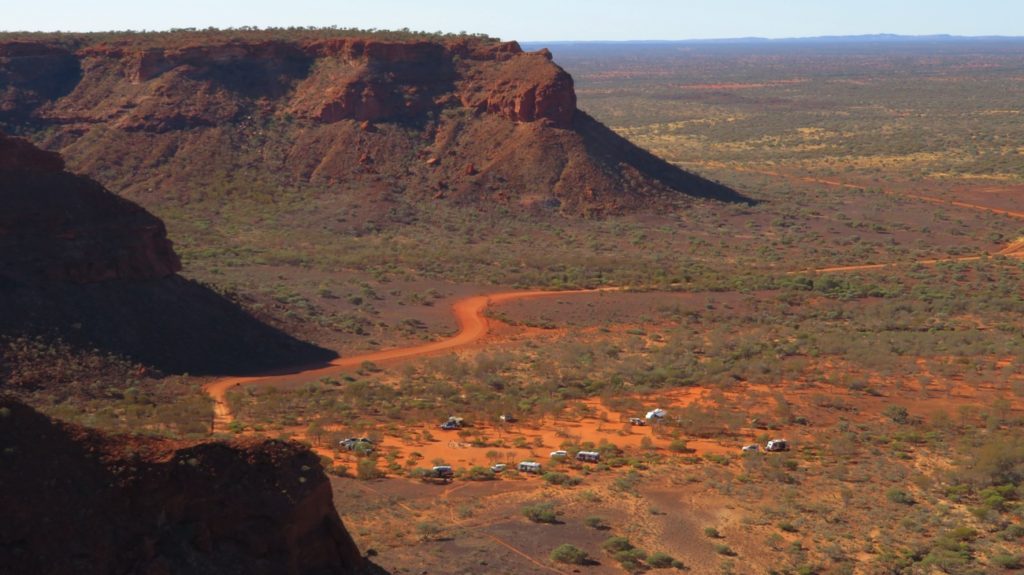23rd June – 1st July 2017
Friday 23rd (Happy birthday Gill)
Today we’re swimming with whale sharks! Whale sharks are the largest fish in the oceans, thankfully plankton feeders. We met our boat and the other 18 excited tourists and 5 crew at the Tantabiddy boat ramp – Whale Shark n Dive is our tour group. There are 5 groups do the whale shark tours but I don’t reckon any of the others were as good as ours. Our boat, Kialla, is a 50ft dive boat which means there’s heaps of room in the wide, flat stern, hot freshwater showers, nice big toilets and broad ‘steps’ forming the ‘marlin board’ to easily enter and exit the water. The crew were all very professional, educational and fun. And the real ‘barista’ coffee we started the morning with was a great kick-starter.
We were outfitted in wetsuits with snorkels, goggles and fins, though Steve and I had our own brand new ones. Snorkelling first – the coral bommies we snorkelled over weren’t very colourful but had a great variety of fish.

The spotter plane tells the boats where the whale sharks are – they’re solitary animals, always swimming alone. On the way out to see them and several other times during the day, we paused to watch the humpback whales swimming north, blowing plumes of water, saw their tail flukes and Steve saw a really spectacular whale breach (I was looking the wrong way – sad face).
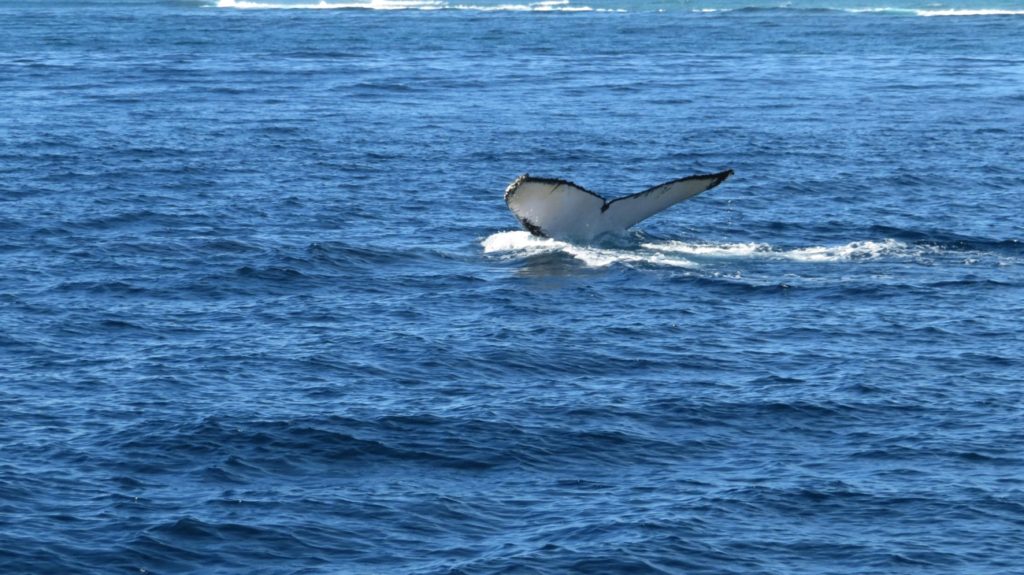
Classic photo – fluke of a humpback whale
We had 6 swims of 5-10 minutes each time with the whale sharks and I can honestly say it was one of the most awesome things I’ve ever done! These massive fish swim just underneath the surface at an easy enough pace that you can snorkel alongside them watching them. We went in in groups of 10 (no more than that permitted) and Steve and I both felt we had pretty amazing swims right beside the whale shark. If you get the opportunity to do this, don’t pass it up!

The spotter plane also spotted a group of manta rays feeding, so the boat headed there next and we swam with them for a while – beautiful, graceful animals.
On our way back to the jetty we also spotted a couple of dugongs (two-gongs, hee hee – Frankie, our skipper’s joke. He said last week they spotted five of them – penta-gongs!).
For more photos of our wonderful time with the whale sharks, whales, manta rays and dugongs CLICK HERE.
Back on shore we headed further south down the western coast of the Exmouth Peninsula and into Cape Range National Park. Very fortunately for us about 10 days ago another camper told us you have to book early to camp here. We wanted to stay for a week but even then weren’t able to book one site for that length of time. However there are lots of National Parks camps all along the beach so we booked two nights in each of 4 camps. Tonight we’re at North Mandu which only has room for 5 campers where we capped off a fantastic day sitting on the pebble beach with a scotch watching a perfect sunset.

The pebble beach at North Mandu.
Saturday 24th – Friday 30th (Happy birthday Kimberly)
The World Heritage listed Ningaloo Reef at more than 300km long is the largest fringing coral reef system in Australia. As a keen snorkeller of coral reefs I’ve been looking forward to being here for many years. The reef varies from about 200 meters – 400 metres offshore in the Cape Range NP section where we’ll be camping. Inside the reef is a partially protected lagoon. Within this lagoon there are coral outcrops which can be accessed from the shore. The Oyster Stacks is recommended as a top spot so we went there on the first day. The entry into the water is difficult with jagged, weathered limestone rocks to negotiate.

The Oyster Stacks. The bommies just offshore are where the fish and corals are.
The coral can’t compare to the beautifully coloured corals of the Great Barrier Reef – occasional areas of green, blue and purple staghorn corals, but on the whole it’s a dull brown. In its favour though are the abundant and beautifully colourful fish – and lots of schools of quite large fish too, trevally maybe. We returned here on our last day and I enjoyed a lovely swim with heaps of fish and a very graceful turtle.

Turquoise Bay. Beautiful sandy beach. We did the ‘drift’ snorkel.
Another day we snorkelled at Turquoise Bay. This beautiful white sandy beach bay has a drift snorkel area where you start at one end and the current sweeps you down to the other end – taking care to stop though before being swept out to sea through the reef! As mentioned a really beautiful bay, but the same brown sponges and corals and not as many fish as Oyster Stacks, though we did see a very large turtle crunching on the coral.
The next couple of nights we spent at North Kurrajong campsite. Here the national parks have provided a covered picnic table on the foredunes behind which we’re camped. Sundowners while watching for whales at sunset is de riguer. We saw plenty of whales just on the other side of the reef and half a dozen dolphins playing in our lagoon. Lots of kangaroos, a few dingoes and even echidna call this park home.

Enjoying sundowners at North Kurrajong campsite
On to Osprey Bay campsite which is huge, covering about 3 acres, all campsites level and well-spaced. Here there are no foredunes so views are directly to the ocean. The beach at one end has low, weathered cliff edges, the other end lovely and sandy.

Walking along the beachside from Osprey campsite
Snorkelling along the edge of a rocky shelf about 100 metres offshore found the most fish – schools of all sizes of beautifully coloured fish and those great big trevally again – some would be a metre to a metre and a half long. A couple of turtles languidly floated on by and stingrays camouflaged themselves pretty well in the sandy bottom.
The downside has been the wind making it uncomfortable to sit outside, and one evening it blew so strongly all night that the motorhome was rocking. Tent campers and those who left annexes out overnight had a pretty rough time.
At the far end of Cape Range National Park is Yardie Gorge which has been carved out by Yardie Creek. We did the 2.5km Class 4 rock scramble up the sides of it to view from above one day. Like the other gorges we’ve seen it has striking high red cliff edges and is quite beautiful.

Yardie Creek at Ningaloo
The next day we put the kayak in and paddled up the creek. The water is so clear – and cold! We went to the far end, paddling against a gentle current and a strong wind in places. The Gorge is a rock wallaby protection zone. The return trip was a very pleasant drift sitting back admiring the cliffs, rock wallabies and nesting egrets – altogether a delightful way to spend a couple of hours.

Yardie Creek Gorge
Click here to see our photos of Ningaloo campsites and snorkelling.



